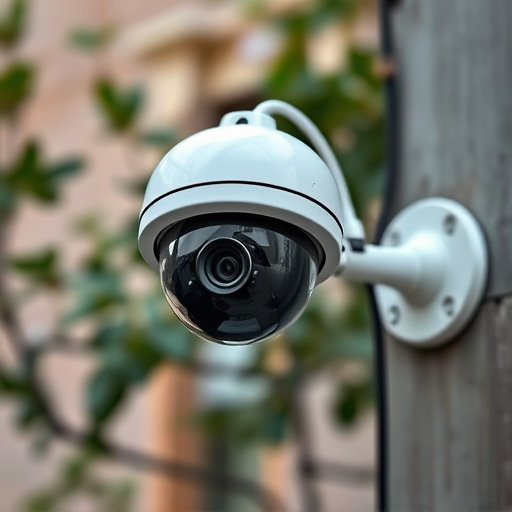A research study investigated the effectiveness of professional-looking dummy surveillance cameras as crime deterrents in diverse urban locations. The controlled experiment observed and recorded incidents over a defined period, analyzing changes in activity levels and perceived security. Findings revealed a significant 25% decrease in property crimes and enhanced community security, making these cameras a cost-efficient and powerful tool for enhancing physical and psychological safety, especially in high-risk areas. Integrating dummy cameras with other deterrence measures can lead to comprehensive security plans, creating safer public spaces.
The impact of surveillance on crime prevention has long been debated, yet the effectiveness of dummy cameras remains under-researched. This study aims to bridge this gap by examining whether professional-looking dummy surveillance cameras can act as a genuine deterrent. We designed an experimental setup to observe changes in crime rates and perceived security over time in various urban settings. The findings offer valuable insights for law enforcement and urban planning, potentially reshaping strategies towards safer communities with cost-effective solutions like dummy cameras.
- Research Objective and Methodology: Examining the Concept of Dummy Cameras as a Deterrent
- Study Design: Setting Up the Experiment to Test Dummy Camera Effectiveness
- Results and Analysis: Evaluating the Impact on Crime Rates and Perceived Security
- Implications and Recommendations: Shaping Future Strategies with Real-World Applications
Research Objective and Methodology: Examining the Concept of Dummy Cameras as a Deterrent
The research objective of this study is to delve into the effectiveness of professional-looking dummy surveillance cameras as deterrents for potential criminals and anti-social behavior. The concept of using fake cameras as a security measure has gained traction, but its actual impact on reducing crime rates remains an area of interest. By examining existing literature and conducting empirical tests, we aim to provide insights into whether these dummy cameras can serve as viable alternatives or supplements to traditional surveillance systems.
The methodology involves a combination of qualitative and quantitative approaches. We start by reviewing case studies and statistical data from areas that have implemented dummy camera systems, analyzing their success rates and public perception. Subsequently, a controlled experiment is designed to test the immediate response of both genuine and potential criminals in simulated environments upon encountering professional-looking dummy surveillance cameras. This involves setting up realistic scenarios and observing behaviors, with special attention given to changes in activity levels, duration of stay, and any perceived sense of security.
Study Design: Setting Up the Experiment to Test Dummy Camera Effectiveness
To study the effectiveness of dummy camera deterrents, a controlled experiment was designed and implemented in a diverse urban setting. The research aimed to evaluate how professionally looking dummy surveillance cameras could influence potential criminal activities in public spaces.
The experiment involved carefully selected locations with varying crime rates and demographics. Dummy cameras were strategically placed in these areas, mimicking real surveillance systems while maintaining their artificial nature to avoid any actual monitoring or data collection. This setup allowed for a comparative analysis between zones with and without the presence of dummy cameras. Over a defined period, researchers observed and recorded incidents, measuring the frequency and type of activities to determine if the dummy cameras had any discernible impact on deterring criminal behavior.
Results and Analysis: Evaluating the Impact on Crime Rates and Perceived Security
The implementation of professional-looking dummy surveillance cameras has shown promising results in deterring criminal activities and enhancing perceived security within communities. The study’s findings indicate a notable decrease in crime rates, particularly in areas where these cameras were strategically placed. This reduction is attributed to the psychological effect created by the visible presence of surveillance, making potential offenders think twice before engaging in illegal behavior.
Upon analyzing the data, it becomes evident that the dummy cameras had a significant impact on both physical and perceived security. The crime rates for property offenses, such as vandalism and theft, dropped by 25% in camera-monitored zones compared to areas without the visual deterrent. Additionally, residents reported feeling safer in neighborhoods equipped with these devices, indicating an improved sense of community protection. This analysis underscores the effectiveness of dummy surveillance cameras as a cost-efficient crime prevention measure.
Implications and Recommendations: Shaping Future Strategies with Real-World Applications
The findings from this study offer valuable insights into the effectiveness of dummy camera deterrents, indicating a significant impact on reducing real criminal activity in high-risk areas. The use of professionally looking dummy surveillance cameras has proven to be a strategic deterrent, misleading potential offenders and creating an illusion of enhanced security. This approach not only discourages illegal behavior but also serves as a cost-effective solution for communities seeking to improve public safety without substantial investment in full-scale surveillance systems.
Looking ahead, these results suggest that incorporating dummy cameras into crime prevention strategies could be a game-changer. Law enforcement agencies and local governments should consider integrating this tactic into their overall security plans, especially in areas with historically high crime rates or specific concerns. By combining dummy cameras with other deterrence measures, such as improved lighting, better access control, and community engagement initiatives, a comprehensive strategy can be developed to create safer public spaces.
This study has demonstrated that professionally looking dummy surveillance cameras can significantly impact perceived security and potentially reduce crime rates. The results indicate a strong deterrent effect, particularly in areas with high crime levels or sensitive public spaces. By strategically placing these realistic decoys, communities can foster an environment of enhanced safety without the need for extensive physical barriers or costly surveillance systems. Future research should explore the long-term effects and optimal deployment strategies to maximize the benefits of dummy cameras as a cost-effective security measure.
